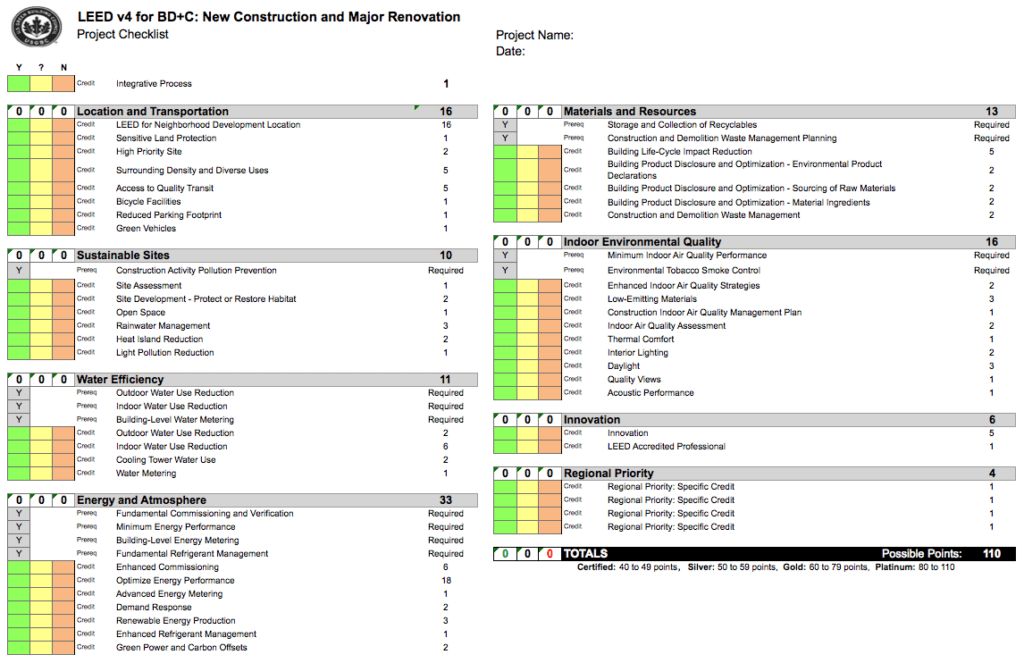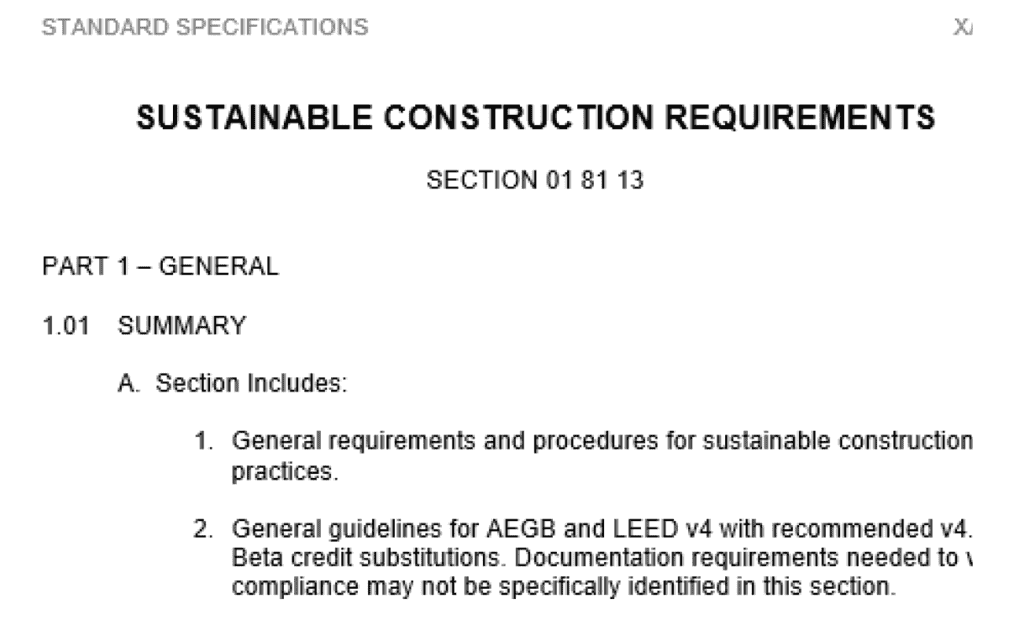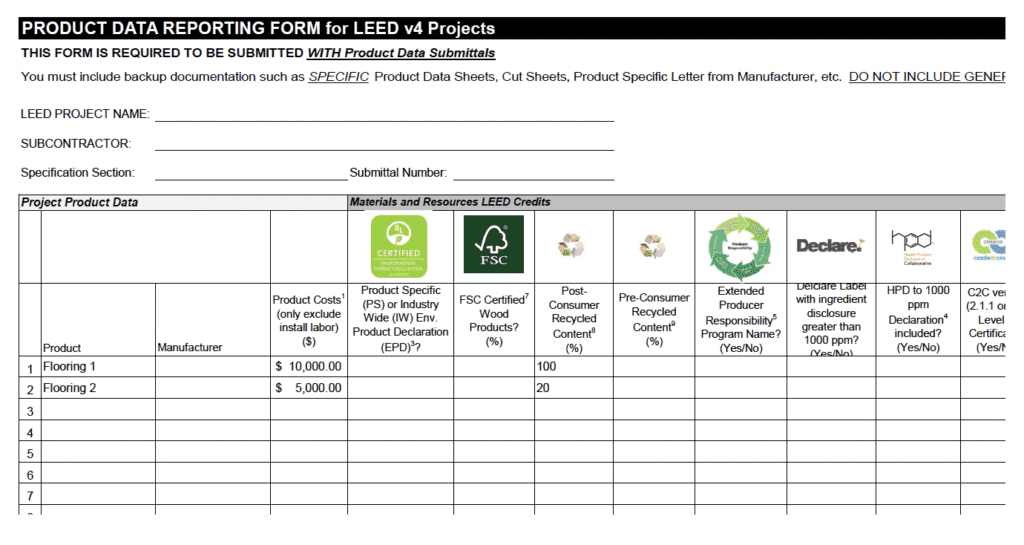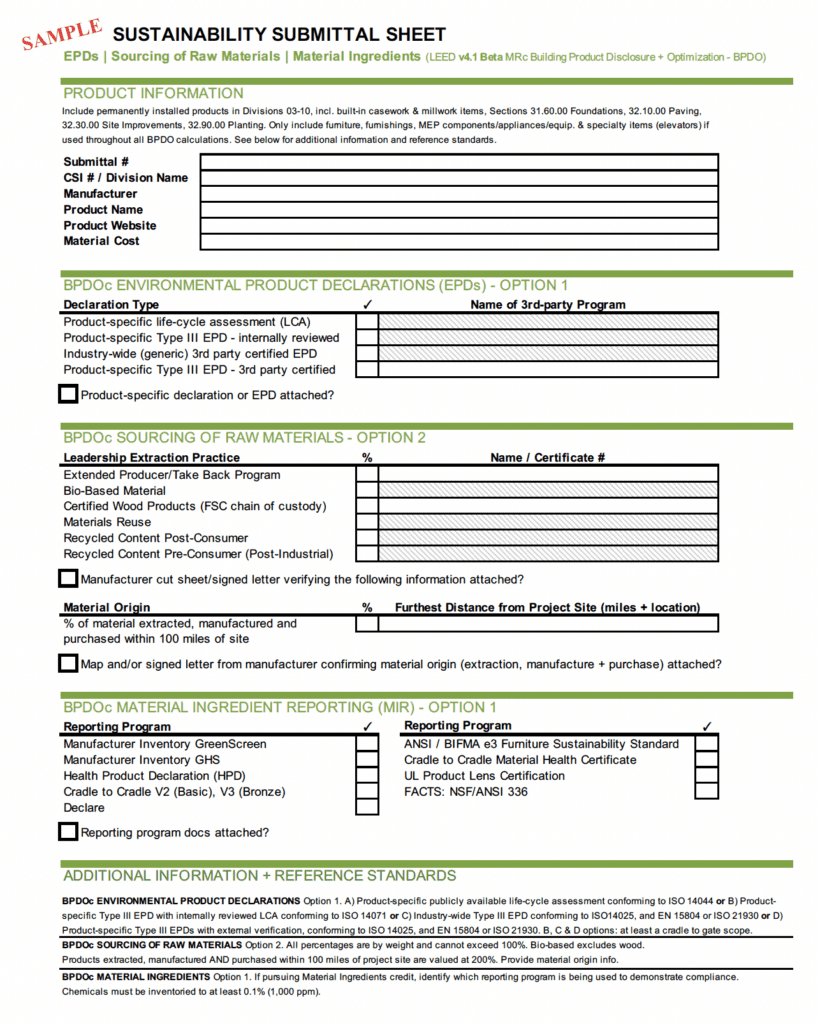Team Member Responsible for Uploading to Leed Online Ss61

Presented by Lauren Rochell
Architect and Senior Sustainability Associate
The Middle for Maximum Potential Edifice Systems
LEED AP BD+C
Setting up for a Successful LEED Submission to GBCI
Apart from keeping LEED reviewers happy, if LEED credits are non accomplished or credits are denied, it puts out risk in the quantifiable evidence of all the hard work that went into the projection. This can make team members jaded during the LEED review process.
If you're asking people for information for the third time, or having to do the piece of work yourself for the third time, it can make the LEED review process quite stressful. So how can we make everyone happy and set ourselves upwards for a successful LEED review process?
Overview:
- Scorecard
- Specifications
- Submittals
- Spreadsheets
- Strategies
- Smart Submissions

one. Setting upwards your LEED Scorecard
There are ii different strategies I suggest for setting upward your LEED scorecard: creating a Credit Buffer or existence strategic nigh Credit Avoidance.
Credit Strategy: Credit Buffer
Creating a 'credit buffer' ways you finish up submitting more than you need, which will atomic number 82 to less review comments during the LEED review process.
- Aim for a 5-signal buffer to avert having to respond to as many last review comments
- Add together High- and Low-Probability Perchance columns to assess confidence, and flush out Maybe points as much every bit possible by structure phase
Credit Strategy: Credit Abstention
The other strategy is to avoid certain credits that you know will issue in LEED review comments or will accept more fourth dimension to achieve.
- Decide credit strategy based on confidence with credit accomplishment and time efficiency, (while also ensuring the project is built to a high standard).
- LEM and Enhanced IAQ Strategies require considerable time commitments but also have considerable benefits for occupants.
- BPDO credit achievement is significantly improved by using Light-green Badger.
Tips: Accept reward of bachelor v4.i credit substitutions – note some addenda are more benign than others, and all v4.1 addenda issued are fair game.

2. Specifications – Div ane
Gear up your project specificifications solid from the showtime. Every squad volition accept a different mode of doing this, simply here are the suggestions I recommend for outlining in Division one. For the sustainable construction requirements, provide a listing of definitions and so everyone understands from the commencement (if they actually read them) or so you lot know where to send people when they take questions.

Division i Section Suggestions
- Sustainable Construction Requirements
- Construction and Demolition Waste product Management
- Construction Indoor Air Quality Direction
- Commissioning
- Edifice Enclosure Commissioning
Sustainable Structure Requirements
- Include credit requirements, definitions, SCAQMD tables, etc.
- Include sustainability submittal cover canvas and electric current LEED scorecard
Tips: In that location is no elegant manner to explain the thresholds for Low-Emitting Materials. Suggest promote 100% compliant products in specs and allow for jerk room during materials tracking
2. Specifications – Div 2+
If Partition 1 is the default space for all relevant LEED projection data, they residual of the sections are near making certain that your submittals are going to exist solid. Don't just assume that your subs are going to read your Division 1 and leave it at that.
Part 1 – Reference Section
- Reference Div 1 Sustainable Construction Requirements
Part 1 – Submittals
- Be specific about what product data, certificates, boosted info is required for supporting documentation.
Part 2 – Product Requirements
- Include product specific LEED requirements such as VOC limits, formaldehyde requirements, FSC contributions (or don't — just be consistent!)
Tips:
- Don't assume subs will receive/read Div one
- Beware of MASTERSPEC's predetermined language
- Go along reference standards up to engagement with electric current LEED requirements (non an piece of cake chore)

3. LEED Submittals
Construction LEED Kick-Off – Topics
Here are the topics I generally cover in our LEED kick-off meetings to make sure everyone on the team is on the same folio:
- Submittal work flow
- Submittal arrangement
- Sustainability embrace sail
- Supporting documentation
- Expectations of subs/vendors
Submittal Workflow
Hither are some example of how a LEED submittal review process could exist managed:
Case #1: GC > LC + AE > GC
In this example, the general contractor gives the submittal to the LEED consultant and the technology team, and they mitt information technology back to the general contractor. (This includes the product information besides equally the LEED supporting documentation).
Versus Example #2: GC PD > AE > GC > GC LEED > LC > Architect > GC
This is an instance of when the LEED submittal gets separated from the production data submittal. Hither, the General contractor submits a product submittal, which and then goes to the architect and engineering house, which goes dorsum to the full general contractor. Then, the general contractor hands off the LEED submittal to the builder and it goes through a whole other procedure.

I hear from general contractor's that it's easier to split the product data submittal from the LEED submittal, just I haven't institute that to exist the example. It is best to have all of the data submitted together. Here'south what your submittal should include for consistency and so your submittal reviewer can finer review everything:
Submittal Arrangement
- Cover sheet for Product A
- Product data for Product A
- Supporting docs with contributions highlighted for Production A
+ And repeat
Tips:
- Don't forget about design stage-related submittals: plumbing equipment, exterior lighting, solar reflectance, etc
- Include Construction IAQ and C+D Waste Management Plans in submittal review
- *Use submittals to concur GCs answerable for installing LEM compliant and BPDO contributing products

3. Submittals – Cover Sheet
Other names for submittal cover sheets: Green Data Form, Sustainability Submittal Canvass
Important Info to include
- Interior and/or Exterior-applied (diagrams in v4 ref. guide)
- Toll
- Volume for moisture-applied products
- Definitions of standards
- Project-specific requirements (ex: Healthcare)
Determine whose cover sail to use
- Green Badger has i available for download
- Sometimes the form in the spec does non fulfill projection goals
Tips:
- Go along it succinct – number of pages, unnecessary words
- Be consequent with terms (example: GEE vs CDPH vs VOC Emissions Evaluation)
- Make it project specific (ex: Healthcare requirements)

four. Spreadsheets
In general, what's going to help with make clean documentation for a LEED reviewer is that everyone knows their responsibilities. I like to track everything that'south on LEED online off of LEED online so you don't have to waste fourth dimension on their platform. I recommend doing as much of the work outside of LEED online as possible.
External/Team Tracking
- Responsible Party – include proper name
- Required Documentation
- Communication, Updates – include dates
- Action Items
- Est. Appointment of Completion

Internal Tracking
- Credit Form Complete? Y/N
- Files Uploaded to LEED Online
- Fix for Review? Y/N
Team Responsibilities
Ensure all teams are in agreement on credit documentation responsibilities:
- Programme exhibits
- Calculators
- Materials tracking
- Uploading to LEED Online
- Credit Forms
- QAQC
Tips:
- Consider having team members sign letter of the alphabet of agreement if concerned with responsibilities being challenged
- Use the activity items spreadsheet equally a working document as well as an agenda for team meetings

v. Strategies
Carve up Review, Campus Approach
- Determine registration and submission pathway strategically to marshal with project timeline and goals
Design and Construction Phase Coordination
- Appraise the experience level of the team to determine how much support is needed. Make sure team members understand what they're doing and why they're doing it.
- Kick-off meetings – total team attendance to ensure all are in agreement on credit responsibilities
- Submit as many credits during pattern phase every bit possible (if yous're doing a split review), including innovation credits, and then subsequently at that place's less structure phase credits yous would need to submit
- Preparation Sessions – familiarize with terms, certifications; invite subs, project engineers, interns
Uploading / Submitting
- Batch uploading vs 1 credit at a time
- Review and nix prior to uploading to LEED Online at once
- Defer design credits to construction phase
Tips: Wrap upward design and construction phases before team members move on to other projects (!!!!!!!!)
6. Smart Submissions
Time Direction
- Limit LEED Online use
- Pre-pay design review fee
- Avoid user errors by compiling documentation as submittals are reviewed
Consistency
- Maintain consistent file classification Excerpt and highlight supporting data Limit LEED Online users
Final QAQC
- Cross-reference credit forms for required documentation Check v4.1 credit substitutions
- Upload v4.1 credit form (if you lot want)
- Check Set up for Review
Resubmitting
- Provide review comment response narrative for each credit.
Additional Ideas
- Mid-review clarifications LEED Motorbus
- Greenish Badger resource tools
Tips:
Go or hire a person who understands LEED fundamentals, cares about the mission behind LEED, is a team role player, and invests their time in sustainable design and construction. This will streamline the LEED submission process faster than any other strategy!
For more strategies on a successful LEED review process, cheque out this post Consistency is Key for LEED Online Submission to GBCI written past Dave Hubka, Managing director of Program Development at Rivion.
You might also be interested in:
Source: https://getgreenbadger.com/setting-up-for-successful-leed-submission-to-gbci/
0 Response to "Team Member Responsible for Uploading to Leed Online Ss61"
Post a Comment